Library renovations encompass size, functionality, uses, furniture, and renovation. Small-town libraries typically range from 3,000 square feet (280 square meters) to 4,600 square feet (430 square meters). Mid-sized libraries in suburban areas often measure between 10,000 square feet (930 square meters) and 15,000 square feet (1,400 square meters). Libraries serve as centers for education, self-enrichment, and entertainment. They offer access to books, periodicals, multimedia materials, and other resources. Libraries provide free or low-cost access to these materials, supporting learning, literacy, and research. They function as community centers, offering programming and internet access. The rectangular library shape facilitates an efficient book stacks and shelving layout. Library furniture includes seating options, tables, desks, shelving systems, circulation desks, book trolleys, carts, display furniture, and children’s furniture. The average ceiling height in libraries ranges from 8 feet (2.4 meters) to 30 feet (9 meters), depending on the size and layout of the building. Library rooms are commonly painted in black, ivory, deep green, teal, brown, blue, and yellow. Library energy efficiency is achieved through efficient equipment, renewable energy sources, and conservation behaviors. Renovating a library costs between $500,000 (€460,000, £395,000) to $1.5 million (€1.38 million, £1.18 million). Factors affecting renovation costs include layout changes, electrical upgrades, and modern amenities. Challenges in redecorating a library include budget constraints, space limitations, adapting to technological needs, maintaining functionality, and dealing with clutter. Choosing the right style and managing time constraints are also significant considerations.
What is the typical size of a library?
A typical small-town or rural public library is 3,000 square feet (280 square meters) to 4,600 square feet (430 square meters) in size. This allows for reasonable capacity to house adult, teen, and children’s collections, plus a couple of public access computer terminals, some seating areas, and a small reference desk area for the librarian. Small branch libraries in larger communities also fall into this smaller range. The average small library may consist of one moderate-sized room, though there are at least two or more reading rooms for some space separation.
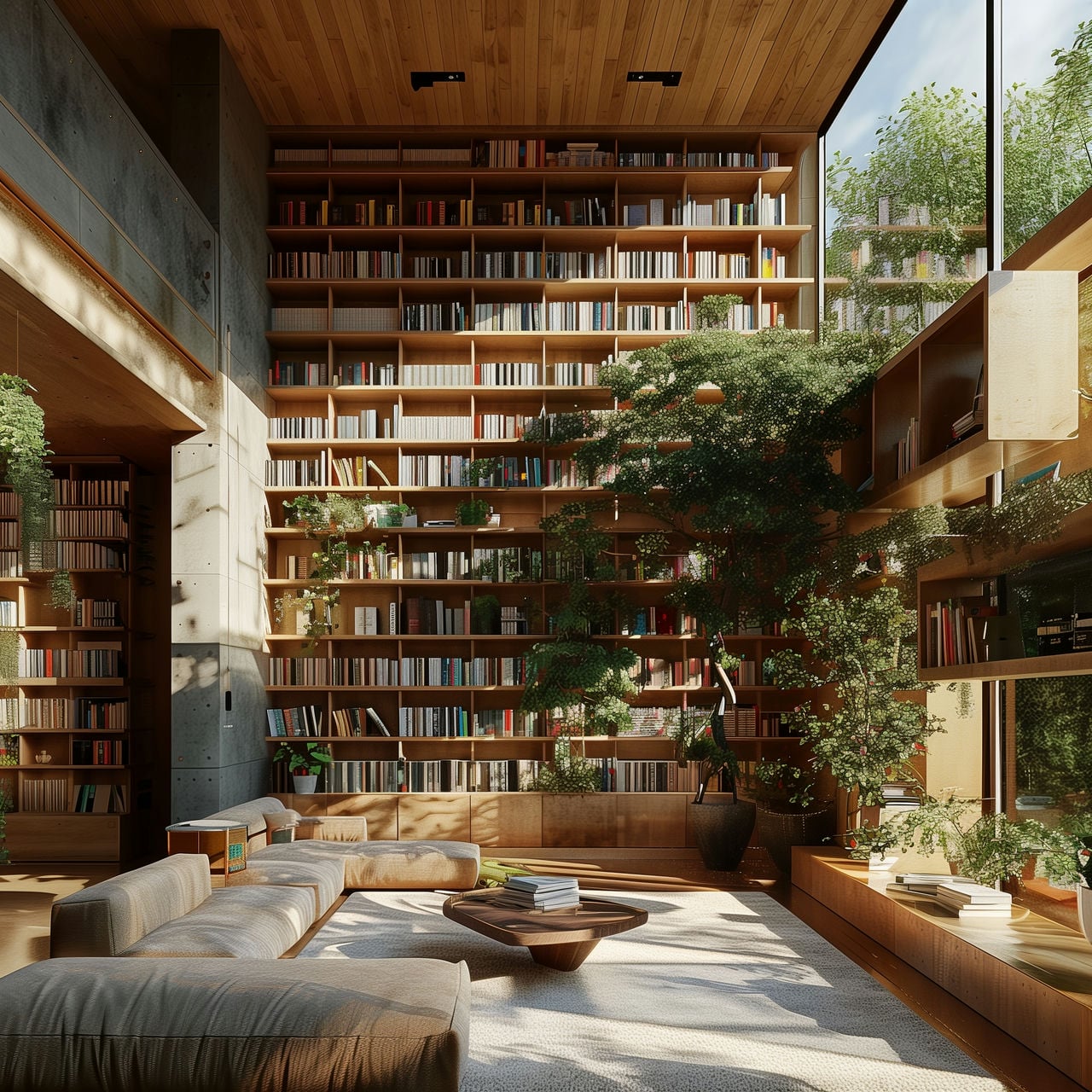
The average mid-sized suburban library system central and satellite branches are 10,000 square feet (930 square meters) to 15,000 square feet (1,400 square meters). This size accommodates more diverse and robust collections with expanded computer labs, more individual and collaborative workspaces, 10-20 public access computer terminals, multipurpose rooms for programs and meetings, and office space for library staff. Dimensions allow for more separation of spaces via multiple reading rooms, book stacks, computer labs, etc. More extensive urban main libraries serving major metropolitan areas tend to exceed 100,000 square feet (9,300 square meters), with some reaching over 250,000 square feet (23,000 square meters). It has a vast array of reading materials, substantial computer resources, plenty of meeting and study rooms that can be reserved, purposeful spaces like innovation labs with 3D printers and production studios, cafes, art galleries, and permanent special exhibits.
What is the use and purpose of a library?
The purpose of a library is to provide education, self-enrichment, and entertainment through its collections, programs, and services. Firstly, the primary purpose of libraries is to serve society by preserving and providing access to information, ideas, and works of imagination and creativity. Libraries aim to meet all community members’ informational, educational, cultural, and recreational needs regardless of background. Secondly, libraries provide free or low-cost access to books, periodicals, multimedia materials, and other resources that support learning, literacy, independent study, and research. They serve as community centers offering programming, meeting spaces, and internet access. Thirdly, libraries play an essential role in education at all levels by providing students access to information sources and research assistance. School libraries, in particular, are shown to have a measurable positive impact on student achievement. Libraries also provide vital services to underserved groups, including low-income families and disabled individuals. Lastly, libraries preserve physical and digital materials as historical and cultural records. Particular collections house rare, valuable items like manuscripts and artifacts. Library websites and catalogs give users access to these materials and tools to effectively find, evaluate, and use information.
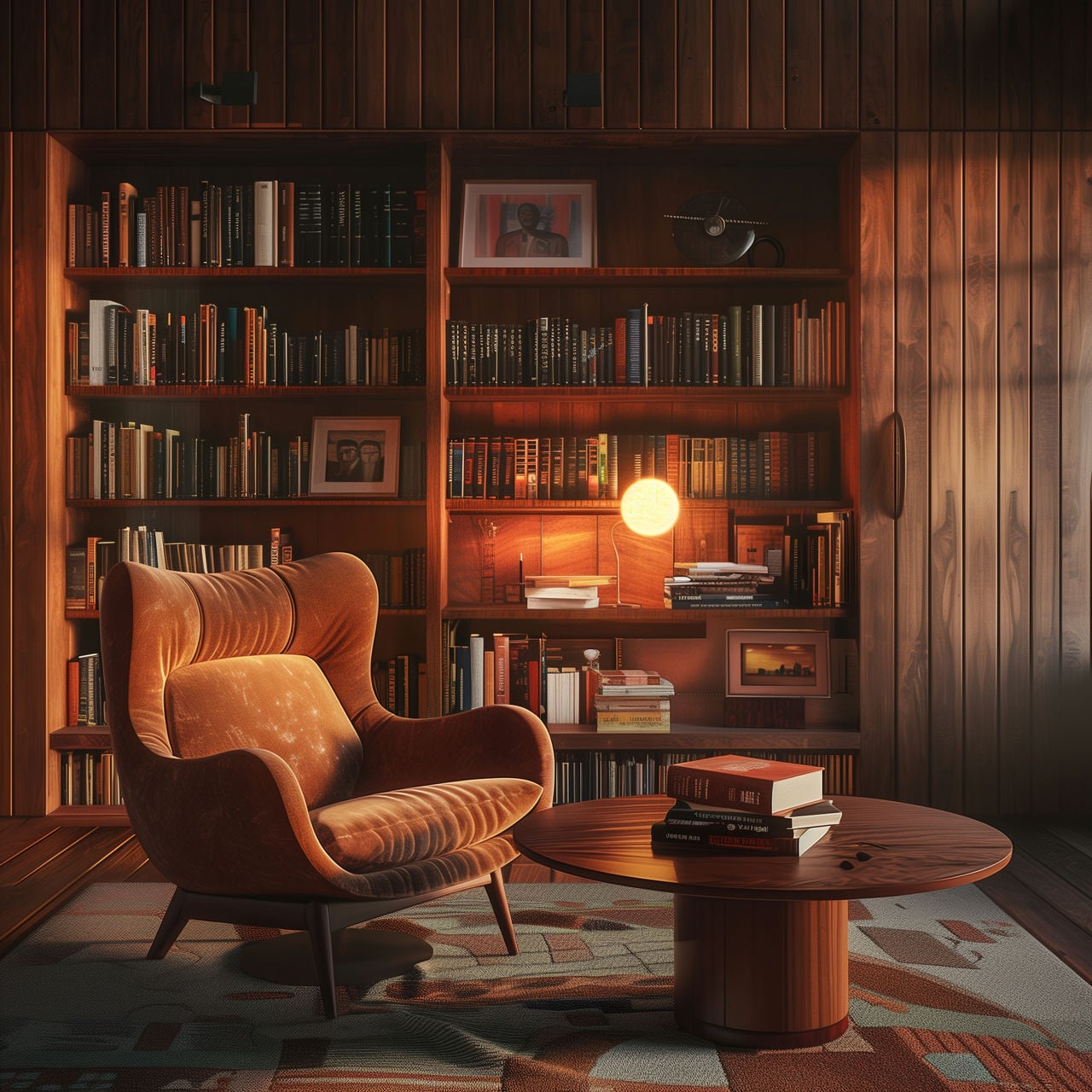
What is the typical shape of a library?
The most common shape for libraries is a rectangular floor plan. This allows for an efficient layout to organize book stacks, shelving in long rows with walkways in between to browse materials. Small single-room libraries in rural towns or urban storefronts tend to be one open rectangular area ranging from 30 feet (9 meters) to 50 feet (15 meters) in depth and 20 feet (6 meters) to 30 feet (9 meters) across. More extensive libraries are two stories to take advantage of height, constructed in an elongated rectangular shape ranging from 100 feet (30 meters) to 200 feet (60 meters) in depth and 50 feet (15 meters) to 100 feet (30 meters) across. This allows expansion by building out additional wings, halls, and rooms as needed over time. Libraries frequently incorporate higher ceilings than typical buildings to accommodate upper-level book stacks visible from the floor below, which complements the elongated shape. Many suburban and central city library buildings embrace the rectangle shape by featuring straight, parallel exterior walls of glass windows to allow natural light inside.
What furniture commonly equips a library?
Listed below are the types of furniture commonly equip a library:
- Seating Options: Seating is a fundamental furniture of any library, providing comfort for patrons who spend hours reading or studying. Libraries feature a variety of seating options, including individual chairs, lounge seating, and benches. These pieces are designed with durability and ergonomics to accommodate extended use.
- Tables and Desks: Tables and desks are essential furniture for providing workspaces for library users. They range from individual study carrels to large tables for group work. Libraries select sturdy tables that are easy to maintain, with surfaces that resist wear and tear from heavy use. Some tables may have built-in power sources and data ports to support using laptops and other electronic devices.
- Shelving Systems: Shelving systems are the backbone of a library, housing the collection of books and other materials. This furniture must be strong and adjustable to accommodate books of various sizes. Libraries choose metal or wooden shelving that can withstand the weight of heavy books and be reconfigured as the collection changes.
- Circulation Desks: The circulation desk is a central feature in a library, serving as the point of check-in and check-out for materials. These furniture are significant and durable, designed to handle high traffic, and provide space for library staff’s computers, scanners, and other equipment.
- Book Trolleys and Carts: Books and carts transport books and other materials around the library. They are essential for librarians when shelving returned items or reorganizing collections. These furniture are designed to be sturdy and maneuverable, with shelves that prevent books from falling off during movement.
- Display Furniture: Libraries use display furniture to highlight new arrivals, special collections, or thematic materials. These furniture can include display stands, cases, or shelving designed to attract attention and encourage patrons to explore different parts of the collection.
- Children’s Furniture: In libraries that serve families and children, there is a section equipped with furniture designed for younger users. This includes smaller tables and chairs, colorful shelving units at an appropriate height, and soft seating for reading areas.
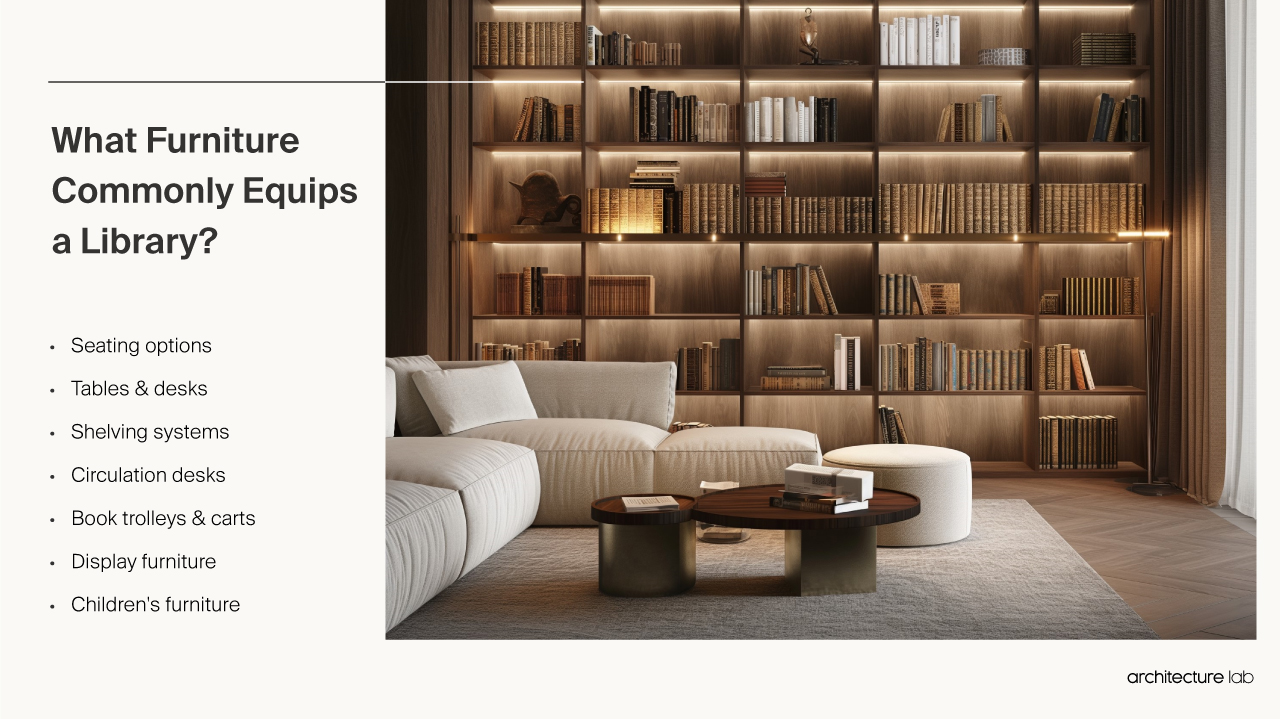
What is the normal ceiling height of a library?
The normal ceiling height in most libraries ranges from 8 feet (2.4 meters) to 30 feet (9 meters), depending on building size and layout. Single-story libraries often have lower ceilings, in the range of 8 feet (2.4 meters) to 10 feet (3 meters), sufficient for compact shelving units. Branch suburban and more extensive multi-story libraries have higher ceilings to incorporate overlooking second-level book stacks and walkways in the 15-foot (4.5 meters) to 30-foot (9-meter) range. Vaulted lobby entranceways boast heightened ceilings up to 30 feet (9 meters) as a dramatic architectural detail. The most monumentally sized historic city central libraries also showcase tall ceilings exceeding 50 feet (15 meters) in their main community rooms and galleries. In most reading rooms, stacks, and shared library spaces, ceiling heights fall between 8 feet (2.4 meters) on the shorter end up to 30 feet (9 meters) for open floorplans, allowing visibility between two stories. This provides both functionality through the overhead room and a spacious aesthetic.
What colors are library rooms usually painted?
Listed below are the colors usually used in library rooms painted:
- Black: Black, such as Napoleon or Gray Flannel, is a sophisticated and elegant choice for a library. This color gives the space the feel of a private club, providing a sense of calm and focus.
- Ivory: Ivory, often paired with dark slate blue accents, is a classic choice for a library. This color scheme creates a clean, bright space that various furniture and decor styles can complement. Ivory walls can help enhance the room’s natural light, making it a comfortable place to read and relax.
- Deep Green: Deep green, like Billiard Green, is a soothing color perfect for a library’s quiet environment. Painting walls and shelves the same color can create a visual flow, making the space more cohesive and inviting.
- Teal: Glossy teal walls can make a small library feel more extensive and more stylish. This color creates a unified visual flow. A monochromatic color scheme with teal can make a small room look bigger, even if the paint is darker.
- Brown: Shades of brown, like Chocolate Velvet or London Clay, are warm and inviting. They can provide a cozy backdrop for a library, making it feel more like a personal retreat. This color can work well with various design styles, from traditional to contemporary.
- Blue: Blue, such as Van Deusen Blue or a light grey blue, can create a relaxed, serene environment in a library. This color can help to reduce stress and promote relaxation, making it an excellent choice for a space dedicated to reading and reflection.
- Yellow: Yellow can be a bold and energizing choice for a library. This color can stimulate the mind and encourage creativity, making it an excellent choice for a study or workspace.
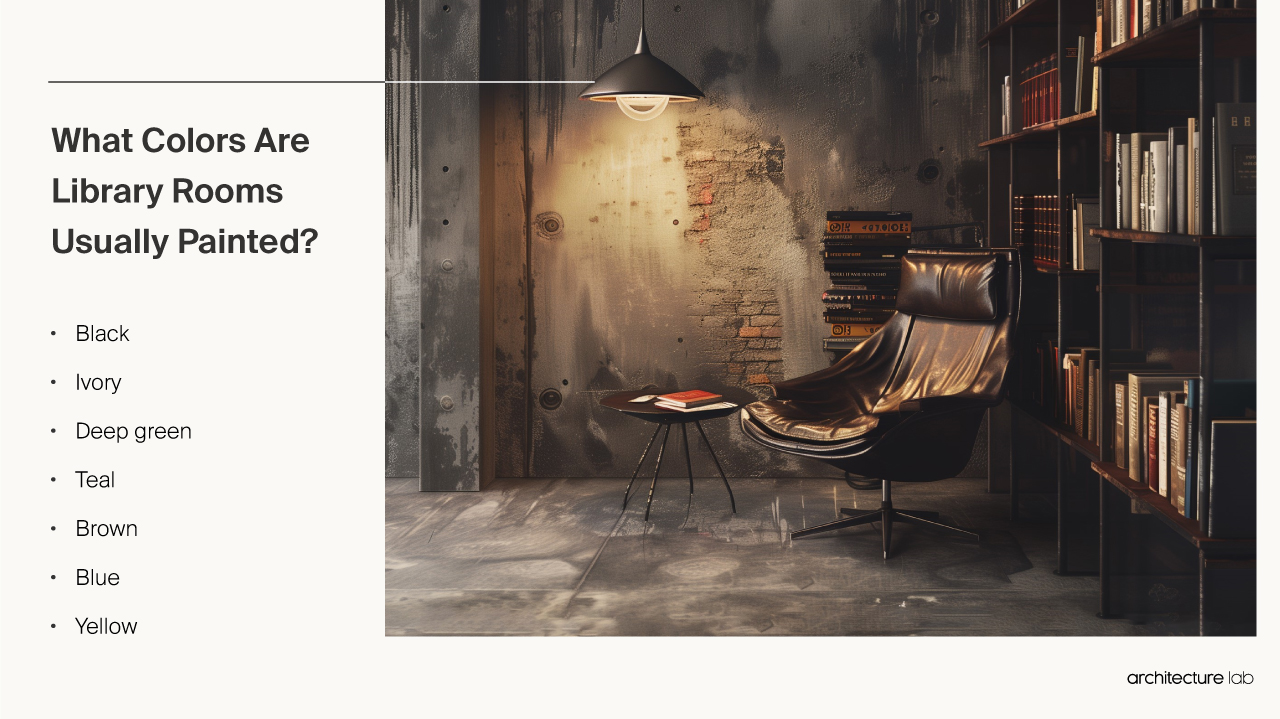
What makes the library functional?
The library is functional to serve societal needs for information access, lifelong learning, intellectual freedom, and cultural enrichment through resources, services, spaces, and good governance. Firstly, libraries function by providing free and equitable access to information resources that meet the educational, informational, cultural, and recreational needs of their communities. Core resources include books, periodicals, multimedia materials, and databases. Adequate access is enabled through circulation, interlibrary loan, reference, programs, and outreach. Secondly, functional libraries are centered around service provision by knowledgeable staff. Librarians and other personnel connect users with relevant resources, instruct patrons in information literacy skills, assist with research, answer reference questions, and more. They ensure high-quality user experiences that make information understandable and actionable. Library staff manage critical behind-the-scenes functions like acquisitions, cataloging, collection development, and preservation. Thirdly, functional libraries provide welcoming physical and virtual spaces for learning, collaboration, creation, and community interaction. The library offers resources, technology, seating, meeting rooms, programming areas, and sometimes maker spaces or creativity centers. Many also have cafes, galleries, or performance venues. Online library spaces extend access to digital collections and services. Lastly, effective management and funding enable libraries to meet community needs. Libraries require ongoing financial support from local, state, and federal sources to operate facilities, pay staff, and develop collections. Library administrators oversee budgets, personnel, policies, partnerships, facilities, and strategic planning. Libraries rely heavily on community engagement and demonstrating value to stakeholders.
How is energy efficiency achieved in a library?
Energy efficiency is achieved by choosing efficient equipment, renewable energy, conservation behaviors, and community engagement to reduce environmental impact. Firstly, libraries can embrace energy-efficient lighting solutions like LEDs and intelligent lighting systems with occupancy sensors and daylight harvesting. These reduce electricity usage for lighting by 40-60% while enhancing ambiance and usability. Many libraries are also installing light shelves and skylights to maximize natural daylight. Secondly, upgrading to high-efficiency HVAC systems with zoned temperature controls, greenhouse, programmable thermostats, CO2 sensors, and variable speed drives curtails heating and cooling energy usage. Strategic building insulation, air sealing, and passive solar design also help regulate indoor temperatures. Some libraries even use renewable energy sources like solar panels or geothermal wells for heating and cooling. Thirdly, transitioning computer labs, servers, and office equipment to ENERGY STAR-certified models saves substantial energy. Enabling power management settings on PCs and using thin client solutions reduces consumption. Libraries can limit phantom load from devices in standby mode with advanced power strips. Lastly, small operational changes like installing low-flow faucets, switching restrooms to sensor-activated lighting, and posting reminder signage add up. Sustainability training for staff and public outreach campaigns bring awareness to patrons. Tracking monthly energy usage with an online dashboard helps monitor optimization efforts.
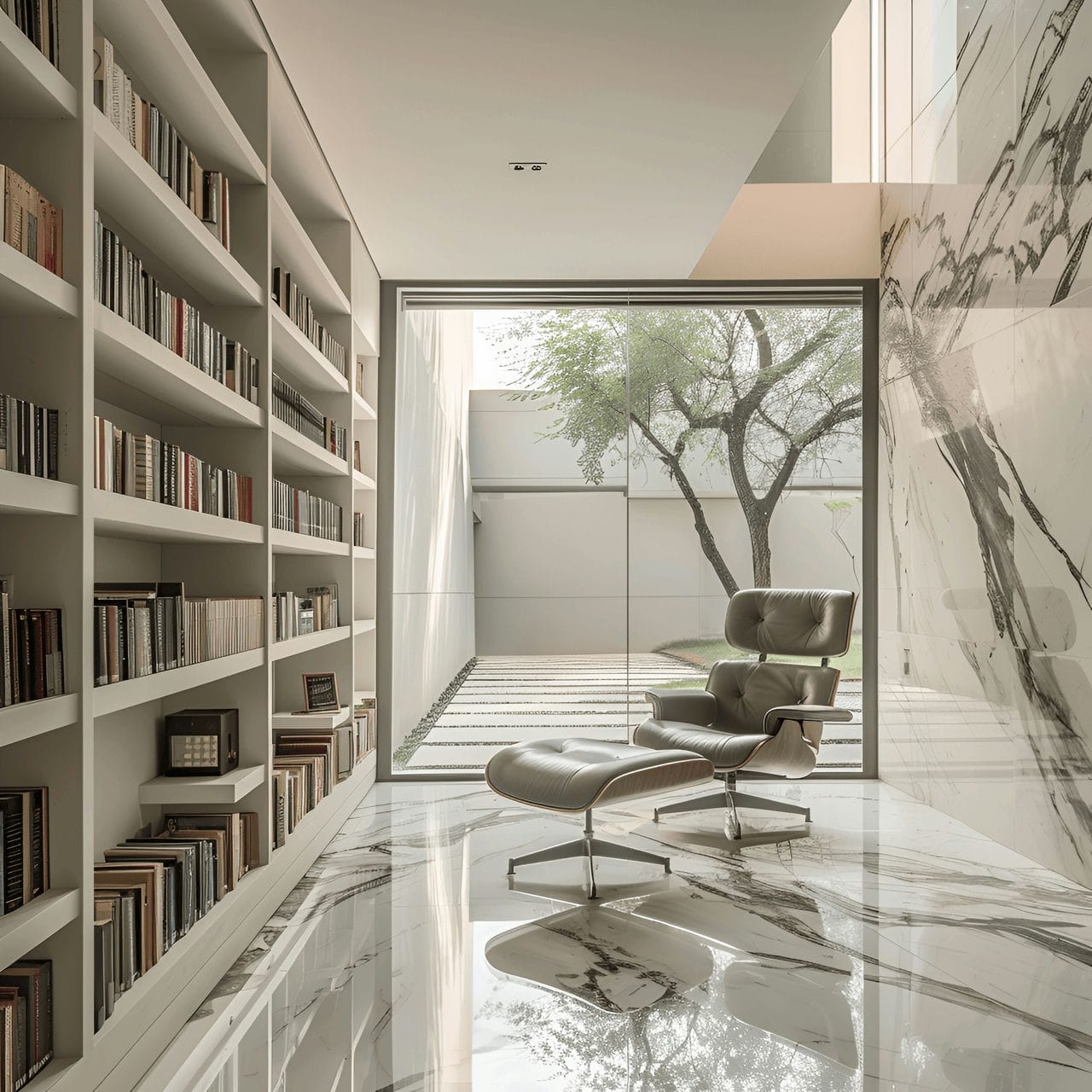
How much does it typically cost to renovate a library?
The cost to renovate or upgrade the average public library, often ranging from 10,000 square feet (930 square meters) to 15,000 square feet (1,400 square meters) in size, runs between $500,000 (€460,000, £395,000) to $1.5 million (€1.38 million, £1.18 million). Small branch libraries, at 3,000 square feet (280 square meters), can often be renovated for $250,000 (€230,000, £197,000) to $750,000 (€691,000, £592,000). Major central library building overhauls exceed $3 million (€2.76 million, £2.37 million), with expansions above 100,000 square feet (9,300 square meters) costing $5 million+ (€4.61 million+, £3.95 million+). Factors impacting library renovation costs include layout changes, electrical and data upgrades, modern amenities like maker spaces or cafes, exterior façade updates, interior finishes, furniture fixtures, and add-ons like rooftop gardens or solar power.
What factors affect the library renovation?
Listed below are the factors that affect the library renovation:
- User Needs and Preferences: One of the critical factors affecting library renovation is the users’ needs and preferences. Libraries are focusing on creating spaces that cater to the diverse needs of their users, including spaces for individual study, group collaboration, and digital learning.
- Budget Constraints: Budget is a significant factor in any library renovation project. Libraries often operate on tight budgets, and a renovation can be a substantial financial undertaking.
- Space Limitations: Libraries have to work within the constraints of their existing space. Incorporating new features or services, such as digital learning spaces or group study areas, can be challenging. Architects and designers need to develop creative solutions to make the most of the available space.
- Technological Integration: As libraries become increasingly digital, integrating technology into the library design is crucial. This can involve creating spaces for computers and digital resources, upgrading the library’s infrastructure to support digital services, and incorporating a digital materials library.
- Disruption to Services: Renovations can cause significant disruption to library services. Noise, dust, and limited access to collections can all impact the comfort and productivity of library users. Libraries must plan carefully to minimize disruption and maintain as much functionality as possible during renovation.
- Building Infrastructure: The existing infrastructure of the library building can also affect the renovation. Issues such as leaks or structural problems must be addressed during renovation. These issues may become apparent once the refurbishment is underway, leading to unexpected costs and delays.
- Design Considerations: The design of the renovated library is a crucial factor. This includes not only the aesthetic design but also practical considerations such as floor loads, flexibility of spaces, and the comfort of the indoor environment. Libraries must work closely with architects and designers to ensure the renovated space is functional and appealing.
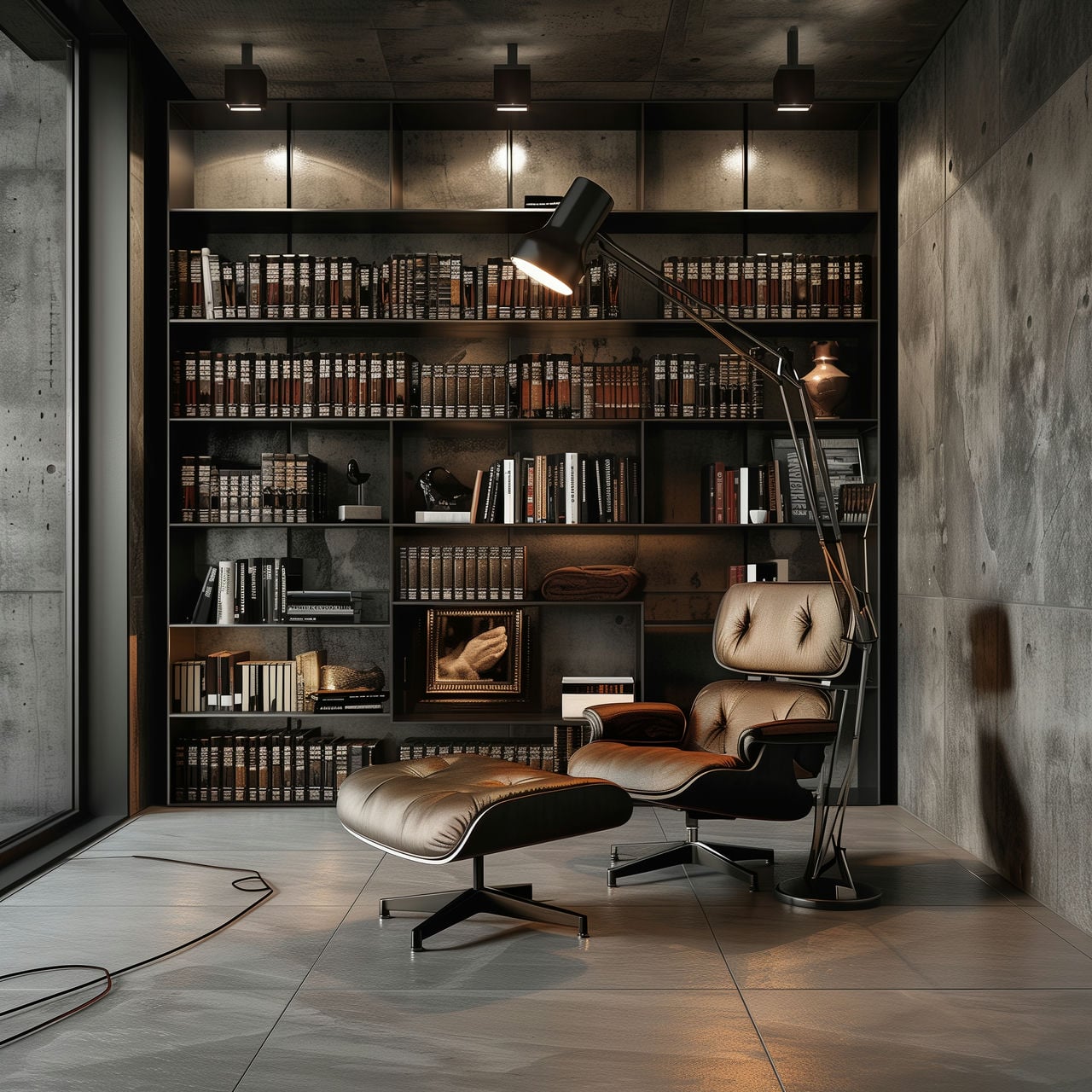
Is an architect required to renovate a library?
No, hiring an architect is not required for renovating public libraries but is highly recommended, especially for structural changes, significant layout reconfigurations, building additions that expand the footprint, or substantial MEP (mechanical, electrical, plumbing) system upgrades. They ensure complicated blueprints meet building codes and public space requirements. Libraries dealing with historic designations or landmarks status also commonly mandate architectural involvement to preserve integrity. Many states require adherence to specific accessibility standards in public facilities, which architects specialize in. An architect’s technical skills are required or highly advisable for library renovations to avoid safety oversights. Their knowledge of zoning laws and experience with public buildings make hiring an architect the most intelligent path for significant overhauls.
How can an architect help you upgrade a library?
Listed below are the ways that an architect can help an owner upgrade a library:
- Understanding Community Needs: Architects can help upgrade a library by understanding the specific needs of its community. They can conduct studies and engage with community members to identify needed improvements.
- Designing for Flexibility: Architects can design libraries to be flexible and adaptable, allowing them to evolve alongside community needs. This could involve creating spaces quickly reconfiguring for different activities, ensuring the library remains relevant and valuable.
- Strategic Planning: Architects can assist in developing a strategic plan for the library upgrade. This includes considering key factors such as the project’s budget, timeline, and stakeholders. A well-planned project can avoid unnecessary expenses, delays, and conflicts.
- Optimizing Space Usage: Architects can help overcome space limitations in libraries. They can devise creative solutions to maximize available space, ensuring that the library can accommodate a variety of functions and services. This can involve reconfiguring the layout, adding new storage solutions, or expanding the building.
- Integrating Technology: Architects can help integrate technology into the library design. This can involve creating spaces for computers and digital resources, upgrading the library’s infrastructure to support digital services, and incorporating a digital materials library.
- Choosing the Right Style: Architects can help determine a style for the library that reflects the tastes and needs of its users, as well as the architectural style of the building. They can advise on current trends and best practices in library design, ensuring that the upgraded library is welcoming and conducive to study and research.
- Collaborating with Contractors: Architects can help manage the construction process, collaborating with contractors to ensure the library upgrade is carried out according to plan. They can oversee the work, resolve issues, and ensure the project is completed on time and within budget.
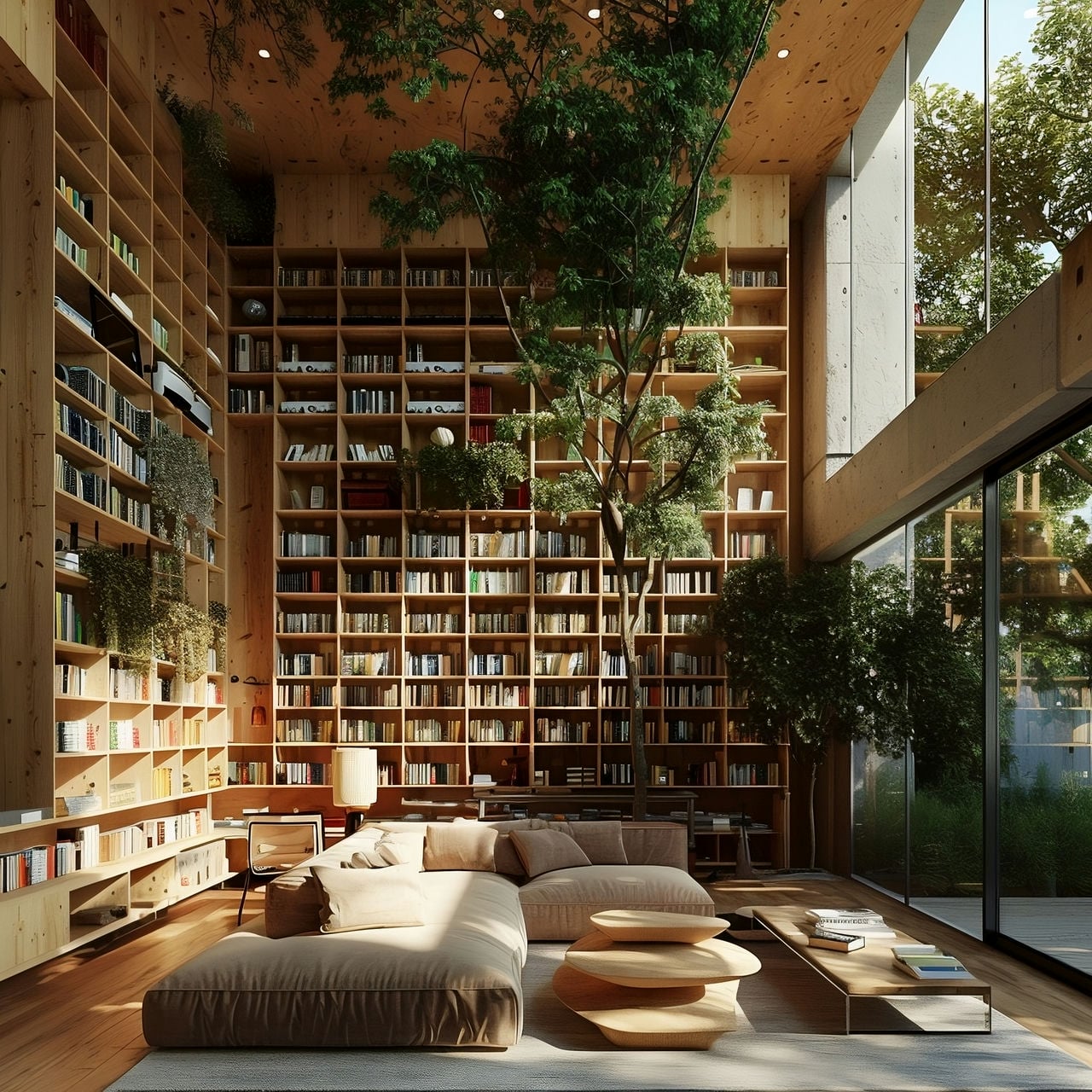
How much does it cost to hire an architect to renovate a library?
The services of an architect to assist in the renovation of the average-sized public library, between 10,000 square feet (930 square meters) and 15,000 square feet (1,400 square meters), range from $150,000 (€138,000, £118,500) on the lower end for essential consultations and site analysis up to $500,000 (€460,000, £395,000) for extensive schematic designs, development of engineering specs, and management of the bid process, including contractor selection. Architectural fees typically amount to 8-12% of the overall construction budget. Most firms bill between $100 to $200 (€92 – €184, £79 – £158) per hour. More complex overhauls of large central libraries or historical buildings warrant more involvement, exceeding $750,000 (€691,000, £592,500) in architectural services for historic preservation compliance and civic project coordination. Average suburban library renovations usually require $150,000 (€138,000, £118,500) to $500,000 (€460,000, £395,000) worth of architectural consulting.
Is it worth it to hire an architect to upgrade a library?
Yes, hiring an architect can provide valuable expertise when undertaking major library renovations involving substantial layout changes, structural modifications, or modernized dated facilities. Their technical knowledge of building codes and experience designing libraries to meet community needs make architects a worthy investment for complex projects. They can steer key upgrades to lighting, floorplans, integrated technology systems, and interior spaces that enhance the user experience. For more straightforward projects limited to things like furniture replacements, minor cosmetic changes, or basic mechanical repairs, a library doesn’t necessarily require complete architectural services.
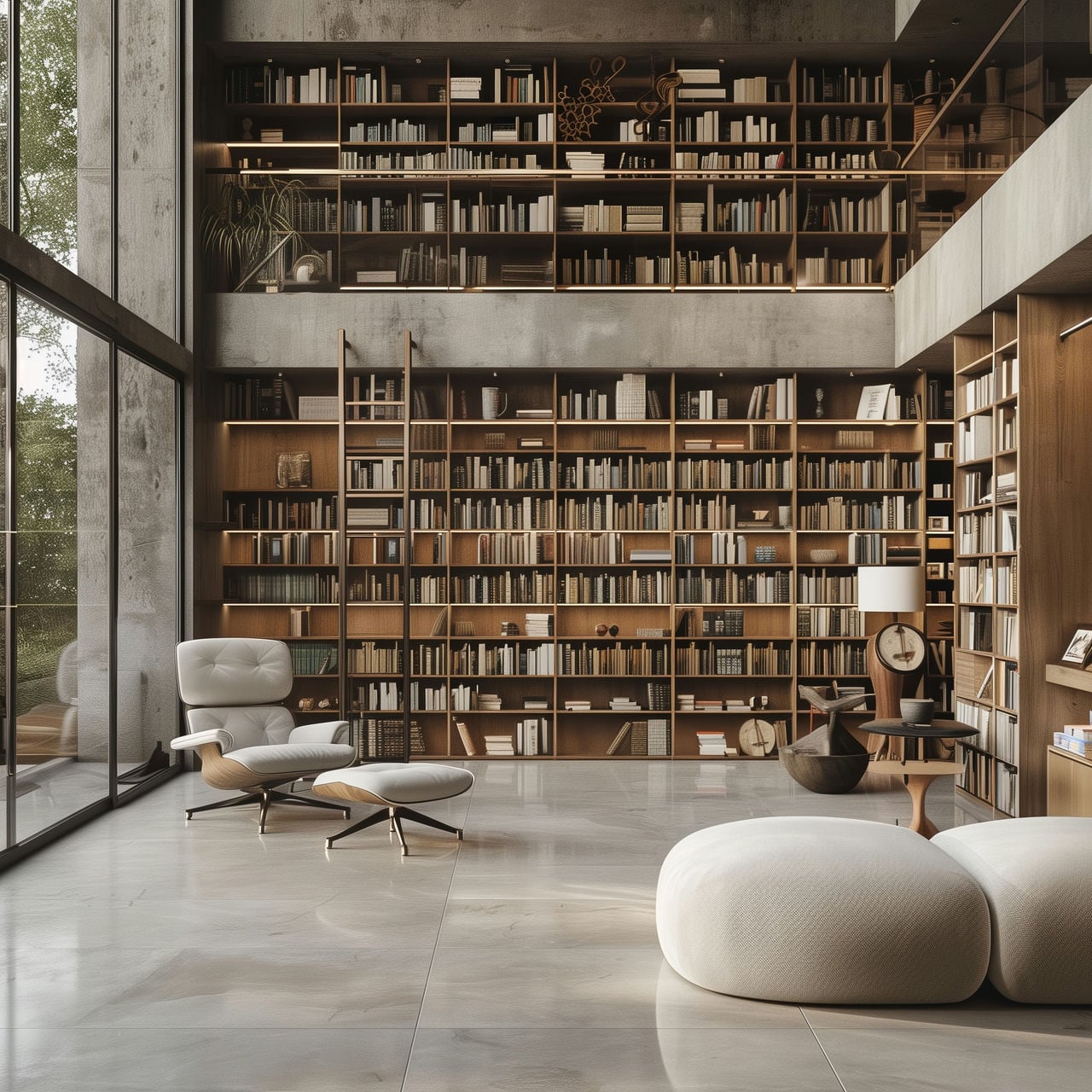
How long is needed to redecorate a library?
7-8 years are needed to redecorate the library. Firstly, the duration of a library renovation or construction project from initial planning to completion averages 8-9 years, with a median duration of 7-8 years. The planning, funding, and design phase alone takes six years. Secondly, the actual renovation or construction phase, once funding and designs are finalized, takes only 1-3 years, depending on the scale and complexity of the project. Small refresh projects focusing on interiors like furniture, lighting, shelving, and cosmetic upgrades can sometimes be completed in less than a year. More extensive projects involving significant system upgrades, reconfigurations, expansions into basements or additions, custom millwork, and finishes tend to take 2+ years. Thirdly, factors impacting project timelines include securing funding from public and private sources, navigating design and governmental approval processes, coordinating logistics like swing space and interim services, phasing work around continued library operations, and managing unforeseen issues like supply chain disruptions. Lastly, best practices dictate advanced planning and notifications to patrons before renovations commence. Libraries aim to minimize disruptions by scheduling noisy work during off-peak hours, offering alternate service points, maximizing online access, and posting construction updates. Staff preparations like shifting collections can begin a year prior.
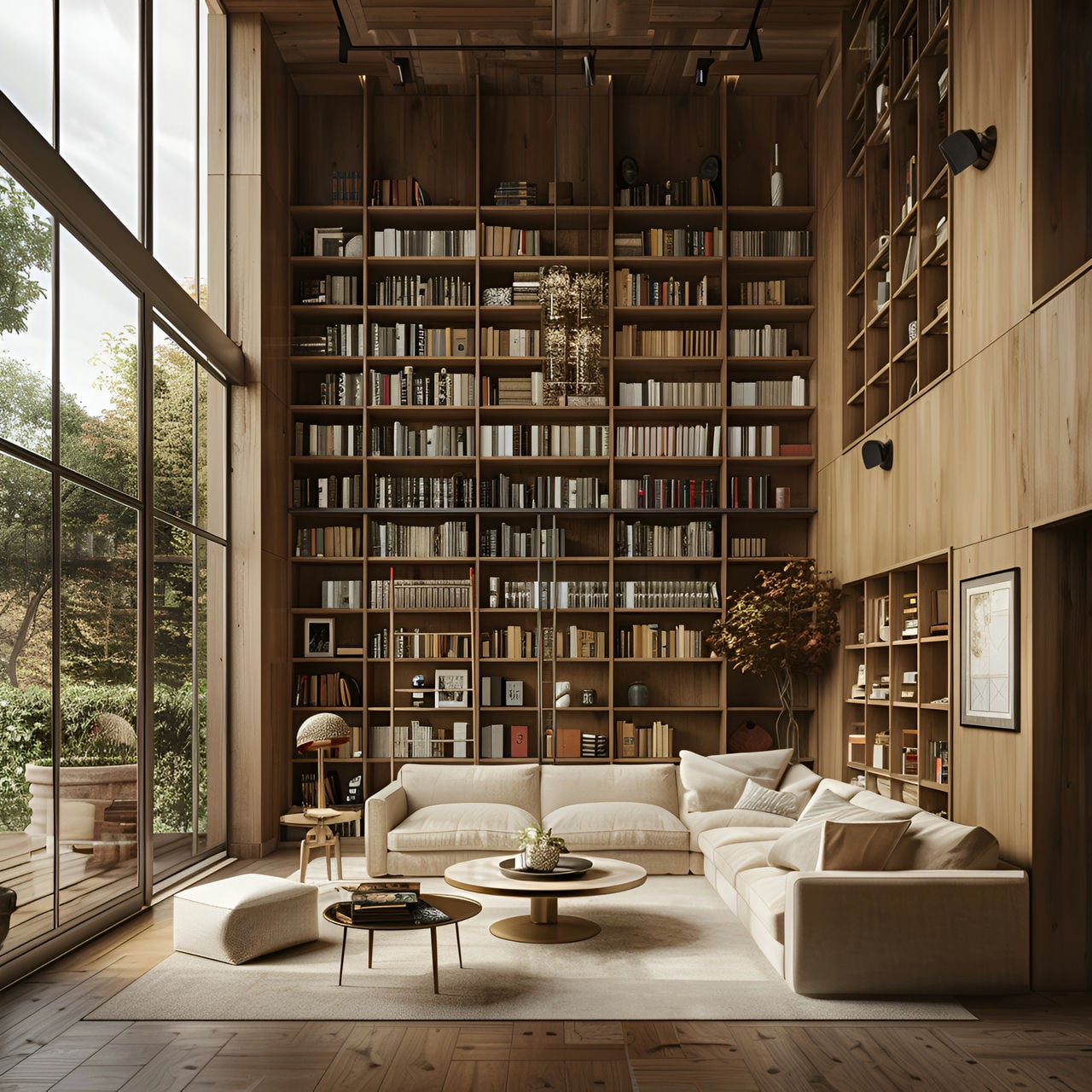
What are the struggles of the homeowner to redecorate a library?
Listed below are the struggles of the homeowner to redecorate a library:
- Budget and Expenses: Libraries operate on tight budgets, making redecoration a significant financial challenge. Funds must be allocated to ensure that resources and services are not compromised. All purchases’ rationale and expected outcomes must be clearly explained to justify the expenditure.
- Space Limitations: Libraries must accommodate a variety of functions within a fixed amount of space. Redecorating can be a struggle when reallocating this space to meet changing needs.
- Adapting to Technological Needs: Libraries are increasingly becoming digital hubs, requiring spaces for computers, digital resources, and related technology. Redecorating must consider these needs, which can be challenging given the rapid pace of technological change.
- Maintaining Functionality: Libraries must continue to serve their users, which can be a logistical challenge. Construction and remodeling can cause noise, dust, and disruption, affecting the comfort and productivity of users.
- Dealing with Clutter: Libraries accumulate many books and other materials over time. Redecorating provides an opportunity to declutter and organize these resources, but deciding what to keep, what to discard, and how to manage everything can be a struggle.
- Choosing the Right Style: Libraries must create an environment that is welcoming and conducive to study and research. Choosing the right style for the library can be challenging, as it must reflect the tastes and needs of a diverse group of users.
- Time Constraints: Redecorating a library is time-consuming and can disrupt normal operations. Libraries must carefully plan and schedule the redecoration to minimize disruption and ensure the project is completed on time.


